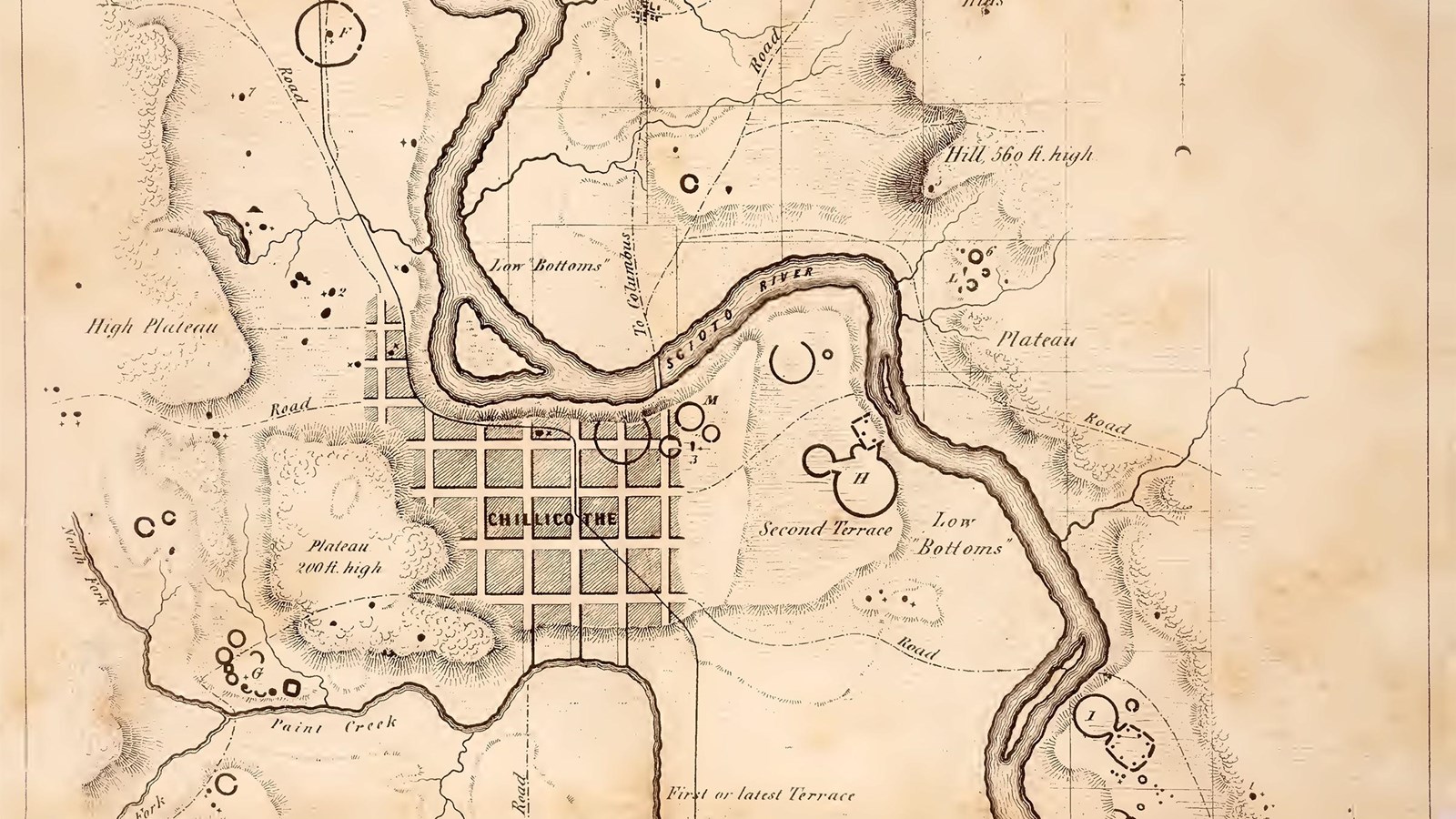Last updated: February 23, 2023
Place
Hopewell Earthworks

Lithograph/E.G. Squier
You are standing near the center of the most spectacular concentration of geometric earthworks anywhere in the world. Native people built more than two dozen huge geometric earthworks within about 25 miles of modern-day Chillicothe, Ohio, nearly 2000 years ago. Extraordinary earthworks were also built in the Great and Little Miami valleys west of here (including Fort Ancient), and in the Muskingum watershed to the northeast (including the Newark Earthworks). But this area in the central Scioto River valley stands above all others in the number, size, and variety of ancient earthworks built here.
"Hopewell" is not the name of any American Indian tribe. We don't know what the people who built the earthworks called themselves. In part, this is because American Indians suffered disease and warfare brought by Euroamerican colonists, and much knowledge and wisdom was lost along with many lives. By 1843, the United States government had forcibly removed all the Tribal Nations from their Ohio homelands to reservations west of the Mississippi River.
The first scientific archeological investigations of the Ohio earthworks took place in this vacuum, without the participation of Indigenous peoples. One of these early excavations took place on a farm owned by a man named M. Cloud Hopewell. The geometric earthworks and the artifacts discovered on Mr. Hopewell's farm were so distinctive and characteristic, that archeologists assigned the name "Hopewell Culture" to the earthwork builders.
"Hopewell" is not the name of any American Indian tribe. We don't know what the people who built the earthworks called themselves. In part, this is because American Indians suffered disease and warfare brought by Euroamerican colonists, and much knowledge and wisdom was lost along with many lives. By 1843, the United States government had forcibly removed all the Tribal Nations from their Ohio homelands to reservations west of the Mississippi River.
The first scientific archeological investigations of the Ohio earthworks took place in this vacuum, without the participation of Indigenous peoples. One of these early excavations took place on a farm owned by a man named M. Cloud Hopewell. The geometric earthworks and the artifacts discovered on Mr. Hopewell's farm were so distinctive and characteristic, that archeologists assigned the name "Hopewell Culture" to the earthwork builders.
